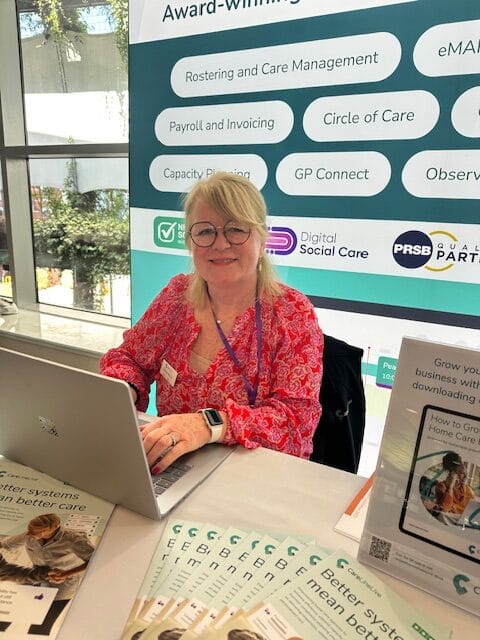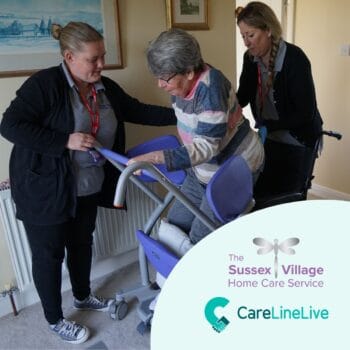The Homecare Association Conference commenced at the Kia Oval in London, heralding an exciting start. This venue, celebrated for its cricketing legacy, also provides an exceptional setting for today’s event. Tailored specifically for the homecare sector, The Future of Homecare 25 Conference presented valuable networking opportunities that resonate with my interests. I as always, was particularly keen to hear about individuals’ experiences in domiciliary care, as it allows me to relay insights and updates from the sector back to our customers.
Attendees were treated to an impressive line-up of talks featuring a wealth of engaging speakers. Here are my top picks from the day.
First up was Dr Jane Townson, Chief Executive of the Homecare Association.
Welcome and introduction to the Homecare Association Annual Conference
Dr Townson discussed the significant highs and numerous lows currently faced by the industry. With a membership of 2,200, the Homecare Association addresses a broad agenda, which includes financial sustainability, workforce awareness, regulatory compliance, quality assurance, innovation and integration.
Moreover, there is a strong emphasis on sector news, media coverage, research and expert analysis. It is evident that the home care sector continues to lag behind in the perceptions and actions of its leaders. Dr Townson emphasised that, at present, approximately 400,000 individuals reside in residential care, compared to 850,000 people receiving care at home per year. More than 15 million of us will, at any one time, receive or need support and care in our own home.
It was stressed that the sector is facing an even more bumpy ride in the near future with:
- The prospect of a National Care Service
- The Casey Commission giving the potential to shape the future direction of the industry
- The Employment Rights Bill
- The prospect of the Fair Work Agency
- The significant impact of this week’s announcements on both providers and workers who have recruited or been recruited from overseas cannot be overstated
- It is essential for the CQC to be held accountable for the current state of affairs concerning the regulator and the issues surrounding the Single Assessment Framework
- The significance of digital data and the impact of AI in social care
- Academic research programmes
We then transitioned to a discussion regarding how other countries are managing their health and social care responsibilities.
International approaches to homecare and its reform
This discussion focused on Australia, Spain and Sweden. As our readers are aware, CareLineLive has extensive knowledge of the Australian market, where we currently serve customers. If you are interested in learning more about the challenges faced by the sector in Australia and the current state of affairs, you can access our white paper here.
Tom Symondson, CEO of Ageing Australia, highlighted that staff turnover in Australia has decreased to 29%. This significant reduction can be attributed primarily to a substantial 30% pay increase over the past three years.
Turning to Europe, I was especially intrigued to discover how our European neighbours are tackling the challenges present in their respective countries. This interest is heightened by the fact that we have European customers using CareLineLive.
As in Australia it is evident that Spain and Sweden face significant challenges related to rising populations, increasing life expectancy and the resulting pressures on society. These issues contribute to a growing financial strain on economies worldwide.
Mario Abajo from Helvetica Group, Spain, presented alarming statistics that highlight the severe crisis facing Spain’s healthcare system:
- Currently, an astonishing 300,000 individuals are awaiting care and support
- Wait times range from 50 to 500 days
- Traditionally, family members have supported their loved ones
- This trend is shifting, impacting the already under-recognised workforce of 120,000 professionals across the country
- In Spain, similar to Australia:
- Most service providers are large organisations
- Smaller providers struggle to enter the market
- There is a pressing need for an estimated 100,000 additional care workers by 2030
- Mario acknowledged this challenge is ‘Just around the corner’
Marta Szebehely from Stockholm University in Sweden highlighted that sexism has been a persistent issue in the industry since the 1950s, characterised by the expectation that ‘daughters and housewives’ would be ’employed’ to care for their loved ones.
Sweden has made progress toward a more representative workforce. However, significant challenges remain due to historically low public spending. Here are some of the main points that Marta highlighted:
- Most people receive care at home.
- Only 1 in 10 live in residential care and this number is expected to continue declining
- The care model is person-centred
- Visits are often very short, sometimes as little as 15 minutes
- Some individuals receive up to 8 visits per day
- Care is made more affordable through:
- A monthly cost cap of £200
- Exemptions for service users who cannot afford to pay
- The sector faces severe recruitment and retention challenges:
- Workers are experiencing mental health issues and burnout
- Many struggle with work-life balance
- Carers often feel undervalued and worry that they may not be providing the highest standards of care
- Positively, society is willing to pay more in taxes to support care
- The sector agrees that increased public spending is essential
Moving on to the final interesting item from the conference, I attended a very enlightening panel discussion.
Commissioning for better outcomes
After a week filled with what can only be described as overwhelming challenges for the industry, it was refreshing to conclude the day on a positive note. Chief Executive Sharon Lowrie, Registered Manager Hanna Holmes, and care worker Darren Leigh from the social enterprise Be Caring, located in the North of England, engaged in a discussion with Alex Chappell, Strategic Director of Adult Social Care for Sheffield City Council. They explored the innovative model for home care services in Sheffield that is proving to be highly effective and beneficial for clients, staff, and local communities.
It involves the following:
- Working collaboratively with all stakeholders, holding frequent meetings to facilitate proactive care and support
- Multidisciplinary care planning
- Positive goal setting and outcomes
- Commissioning long term contracts in small geographical areas which has led to provider stability and continuity of care for clients and staff
- Engaging in community outreach which involves communities, people receiving care and staff. This has been extremely successful
- Regular check-ins with staff are proving to be invaluable for staff morale
- The implementation of condensed working methods has enhanced care coordination, resulting in more efficient rounds. This improvement has made shift patterns more effective and accessible for staff, significantly contributing to a better work-life balance and greater financial stability
- Client satisfaction stands at an impressive 93%, categorised as either good or outstanding
- Data-driven outcome monitoring is demonstrating significant improvements in outcomes
Sharon and Alex acknowledged that the journey had been challenging, however, the results have proven to be invaluable. Everyone involved concurred that this model deserves serious consideration and should be adopted as part of the initiative to tackle both longstanding and emerging challenges currently confronting home care.




